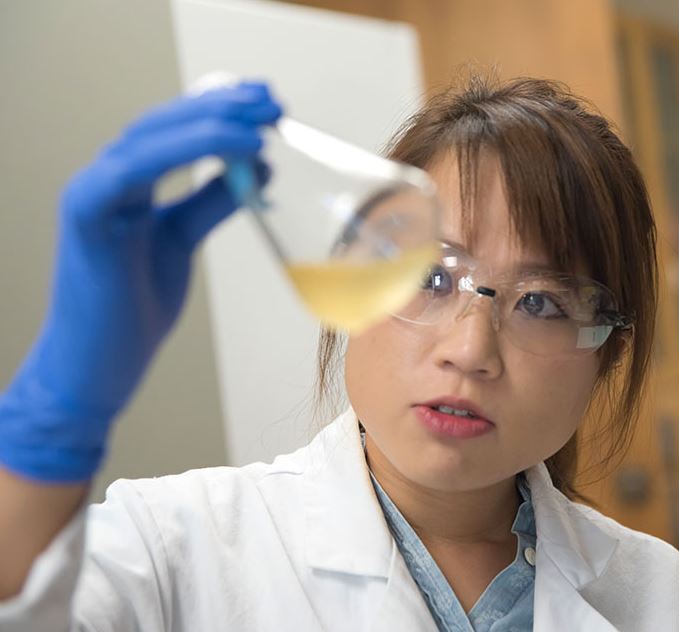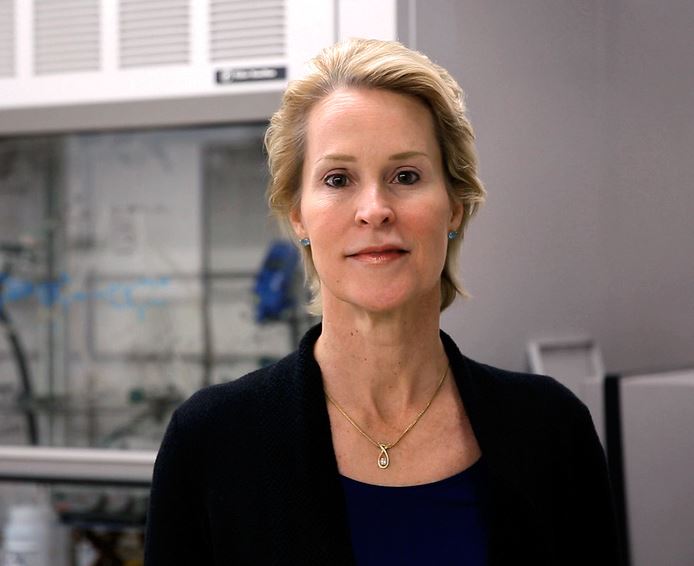We have long wondered whether silicon based life forms may exist somewhere in the Universe – aliens that are not carbon based, but whose planet’s nature is based on another element, silicon. Scientists at Caltech (California Institute of Technology) have managed to show that life forms on Earth can be persuaded to make silicon-carbon bonds.
The Caltech researchers bred a bacterial protein so that it could make the man-made bonds. Not only does this breakthrough have implications for how we imagine extraterrestrial life forms might be made of, but it may also have interesting applications in a number of industries.
The study does not prove that silicon-life forms exist, it simply shows us that it is possible to persuade nature to shift in that direction
Silicon bonds already found in industry
Molecules with organosilicon – containing carbon–silicon bonds – are found in several man-made products, including pharmaceuticals, paints, agricultural chemicals, TV screens & computer monitors, and semiconductors.
![]() If organosilicon-based life exists, might it look like this artist’s impression? This latest study does not prove that silicon based life is possible, but it shows that life can be persuaded to incorporate silicon into basic components, into the building blocks of life. (Image: mediaassets.caltech.edu)
If organosilicon-based life exists, might it look like this artist’s impression? This latest study does not prove that silicon based life is possible, but it shows that life can be persuaded to incorporate silicon into basic components, into the building blocks of life. (Image: mediaassets.caltech.edu)
These products are currently only manufactured synthetically, given that silicon-carbon bonds do not exist in nature as we know it.
In this new study, which recently won the Dow Dow Sustainability Innovation Student Challenge Award (SISCA) grand prize, scientists have clearly demonstrated that biology can be used instead to manufacture these bonds.
By using biology, we would be protecting our environment as well as saving a considerable amount of money.
Principal investigator, Frances Arnold, Caltech’s Dick and Barbara Dickinson Professor of Chemical Engineering, Bioengineering and Biochemistry, and colleagues wrote about their study and breakthrough in the prestigious journal Science (citation below).
Prof. Arnold said:
“We decided to get nature to do what only chemists could do—only better.”
![]() Prof. Arnold and colleagues believe their breakthrough represents a milestone for the production of pharmaceuticals, agricultural chemicals and other products. (Image: twitter.com/francesarnold)
Prof. Arnold and colleagues believe their breakthrough represents a milestone for the production of pharmaceuticals, agricultural chemicals and other products. (Image: twitter.com/francesarnold)
This is also the first study to demonstrate that nature can adapt to incorporate silicon into carbon-based molecules. All life on Earth is carbon-based, the building blocks of life are carbon-based molecules.
We’ve been dreaming for decades about silicon
For a long time, scientists have wondered whether life on our planet might have evolved to be based on silicon rather than carbon.
Famous and not-so-famous science fiction authors have often helped us imagine planets in the Universe where life was silicon-based. Examples include the Horta creatures featured in a 1960s Star Trek episode.
Silicon and carbon have several similarities. They are able to form bonds to four atoms at the same time, making them well-suited to form long molecule chains, like the ones we find in life on Earth, such as DNA and proteins.
Lead author, Jennifer Kan, a postdoctoral scholar in Prof. Arnold’s lab, said:
“No living organism is known to put silicon-carbon bonds together, even though silicon is so abundant, all around us, in rocks and all over the beach.”
Silicon is the second-most common element in Earth’s crust.
Video – Arnold Protein Animation
In this Caltech video, you can see the structure of Cytochrome c protein from Rhodothermus marinus, showing iron (red) bound near the center. Scientists mutated amino acids in the pink-colored region to improve the protein’s carbon-silicon bond forming ability.
Directed evolution
The scientists used a method known as directed evolution – it mimics the process of natural selection to evolve nucleic acids or proteins toward a user-defined goal. Directed evolution was pioneered by Prof. Arnold in the early 1990s – she created new and better enzymes in the lab by artificial selection, similar to how humans today modify cows, corn or cats.
An enzyme is a class of protein that catalyzes (facilitates) chemical reactions – it is a biological catalyst.
In directed evolution, scientists start with an enzyme that they wish to enhance. The enzyme’s DNA coding is mutated in more-or-less random way, and the resulting enzymes are tested to determine whether they have the desired trait.
The best enzyme – the top-performing one – is then mutated again. The process is done again and again until scientists have created an enzyme that performs better than the original.
We have been using directed evolution for a long time to make detergents and other household products, as well as for ‘green’ sustainable routes for making fuels, agricultural chemicals and pharmaceuticals.
 Jennifer Kan, who works at Prof. Arnold’s lab, is a post-doctoral researcher, specializing in organic chemistry, biochemistry and catalysis. (Image: mediaassets.caltech.edu)
Jennifer Kan, who works at Prof. Arnold’s lab, is a post-doctoral researcher, specializing in organic chemistry, biochemistry and catalysis. (Image: mediaassets.caltech.edu)
The aim in this latest study was twofold:
– Improve an enzyme’s biological function.
– To persuade the enzyme to do something it had never done before.
Their first step was to find a suitable candidate, an enzyme with potential for making silicon-carbon bonds.
Prof. Arnold, who is also director of Caltech’s Donna and Benjamin M. Rosen Bioengineering Center, explained:
“It’s like breeding a racehorse. A good breeder recognizes the inherent ability of a horse to become a racer and has to bring that out in successive generations. We just do it with proteins.”
Their most suitable candidate turned out to be a protein from a bacterium that grows in the hot springs of Iceland – cytochrome c. It normally shuttles electrons to other proteins, but the scientists discovered that it also happens to act like an enzyme to create low levels of silicon-carbon bonds.
They then mutated that protein’s DNA coding with a region that specifies an iron-containing portion of the protein believed to be responsible for its silicon-carbon bond-forming activity.
 Prof. Frances Arnold is an American engineer and scientist. She pioneered methods in directed evolution to create interesting and useful biological systems, including enzymes, organisms, genetic regulatory circuits, and metabolic pathways. Apart from those mentioned on this page, her work has been recognized by several awards, including the 2011 Draper Prize and the National Medal of Technology & Innovation in 2013. (Image: caltech.edu)
Prof. Frances Arnold is an American engineer and scientist. She pioneered methods in directed evolution to create interesting and useful biological systems, including enzymes, organisms, genetic regulatory circuits, and metabolic pathways. Apart from those mentioned on this page, her work has been recognized by several awards, including the 2011 Draper Prize and the National Medal of Technology & Innovation in 2013. (Image: caltech.edu)
An amazing organosilicon maker was created
They then tested these mutant enzymes to determine whether they were better at making organosilicon compounds than the original.
It was not long before the researchers had created an enzyme that could selectively make silicon-carbon bonds fifteen times more efficiently than the best catalyst invented by chemists – they got there in just three rounds.
As the enzyme is incredibly highly selective, it makes significantly fewer unwanted byproducts that need to be chemically separated out.
Dr. Kan said:
“This iron-based, genetically encoded catalyst is nontoxic, cheaper, and easier to modify compared to other catalysts used in chemical synthesis. The new reaction can also be done at room temperature and in water.”
![]() In the Star Trek Original Series, Captain Kirk and team members come across Horta, a highly-intelligent silicon-based species. It tunnels through solid rock as easily as we move through air. The life form is female and lives in the planet Janus IV, below a Federation mining facility. (Image: memory-alpha.wikia.com)
In the Star Trek Original Series, Captain Kirk and team members come across Horta, a highly-intelligent silicon-based species. It tunnels through solid rock as easily as we move through air. The life form is female and lives in the planet Janus IV, below a Federation mining facility. (Image: memory-alpha.wikia.com)
When making silicon-carbon bonds synthetically, precious metals and toxic solvents are often used. This requires additional processing to remove unwanted byproducts, which pushes up the costs when making these compounds.
Regarding the prospect of life evolved to use silicon on its own, Prof. Arnold said that it is up to nature.
Prof. Arnold said:
“This study shows how quickly nature can adapt to new challenges. The DNA-encoded catalytic machinery of the cell can rapidly learn to promote new chemical reactions when we provide new reagents and the appropriate incentive in the form of artificial selection.”
“Nature could have done this herself if she cared to.”
Citation: “Directed evolution of cytochrome c for carbon–silicon bond formation: Bringing silicon to life,” S. B. Jennifer Kan, Russell D. Lewis, Kai Chen,and Frances H. Arnold. Science. Published 25 Nov. Vol. 354, Issue 6315, pp. 1048-1051. DOI: 10.1126/science.aah6219.
Video – Bringing silicon to life
This Caltech video explains how researchers have persuaded living organisms to make chemical bonds that do not exist in nature as we know it. Their finding could change how medications and other chemicals are produced in the future.

